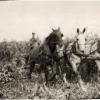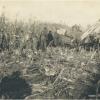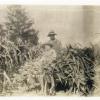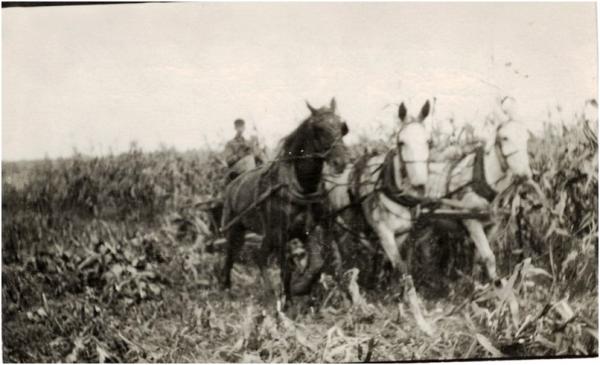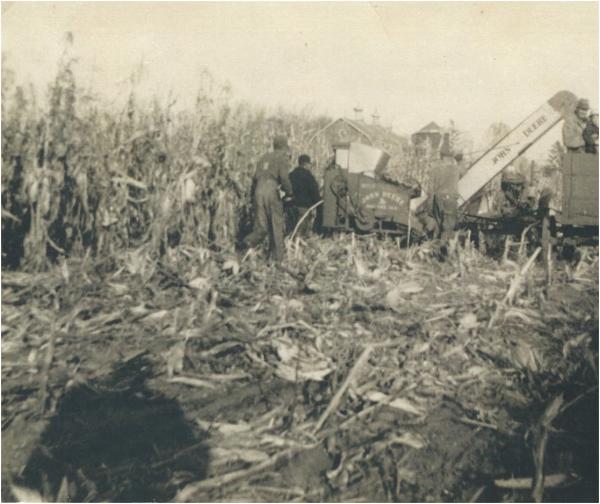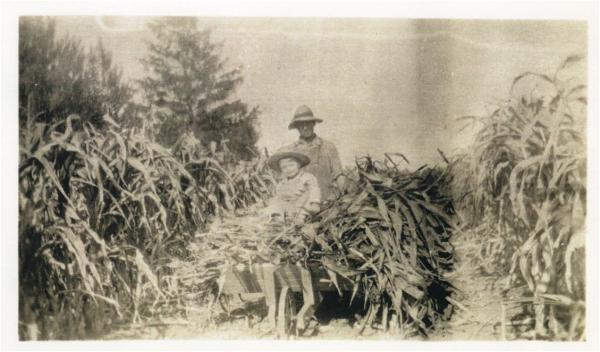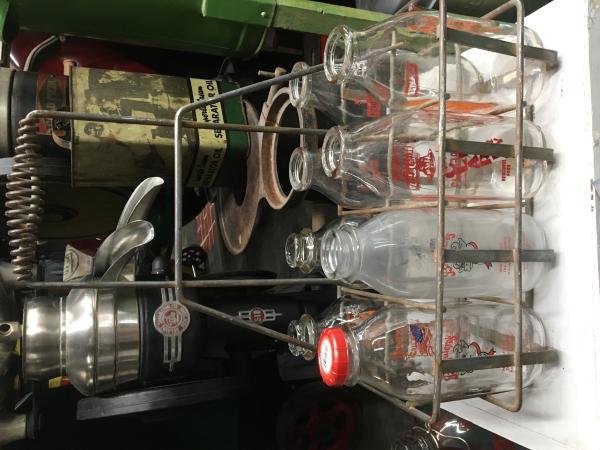Iowa Farmers and the Great Depression Strikes
| Grade | 9th -12th Grades | Class | U.S. History | Length of Lesson | 50 minutes |
| Lesson Title | Iowa Farmers and the Great Depression Strikes |
| Unit Title | Prosperity to the Great Depression |
| Unit Compelling Question | How were Iowa farms affected by the Great Depression? |
| Historical Context: The Great Depression Hits Farms and Cities in the 1930s Farmers struggled with low prices all through the 1920s, but after 1929 things began to be hard for city workers as well. After the stock market crash, many businesses started to close or to lay off workers. Many families did not have money to buy things, and consumer demand for manufactured goods fell off. Fewer families were buying new cars or household appliances. People learned to do without new clothing. Many families could not pay their rent. Some young men left home by jumping on railroad cars in search of any job they could get. Some wondered if the United States was heading for a revolution. Farmers Grow Angry and Desperate During World War I, farmers worked hard to produce record crops and livestock. When prices fell they tried to produce even more to pay their debts, taxes and living expenses. In the early 1930s prices dropped so low that many farmers went bankrupt and lost their farms. In some cases, the price of a bushel of corn fell to just eight or ten cents. Some farm families began burning corn rather than coal in their stoves because corn was cheaper. Sometimes the countryside smelled like popcorn from all the corn burning in the kitchen stoves. Some farmers became angry and wanted the government to step in to keep farm families in their homes. In Le Mars, Iowa, a mob of angry farmers burst into a court room and pulled the judge from the bench. They carried him out of the court room, drove him out of town and tried to make him promise that he would not take any more cases that would cost a farm family its farm. When he refused, they threatened to hang him. Fortunately the gang broke up and they left the judge in a dazed condition. The governor of Iowa called out the National Guard who rounded up some of the leaders of the mob and put them in jail. In other areas around the state, farmers banded together like a labor union and threatened to prevent any milk from getting from farms to towns and cities. They hoped that this would raise the price that farmers were paid for their products. They set up blockades on country roads and made any trucks carrying milk, cream, butter or other farm products to turn around and go back home. They called it "The Farm Strike." Not all farmers joined the movement, however, and the effort did not have any effect on prices. In some ways farmers were better off than city and town dwellers. Farmers could produce much of their own food while city residents could not. Almost all farm families raised large gardens with vegetables and canned fruit from their orchards. They had milk and cream from their dairy cattle. Chickens supplied meat and eggs. They bought flour and sugar in 50-pound sacks and baked their own bread. In some families the farm wife made clothing out of the cloth from flour and feed sacks. They learned how to get by with very little money. But they had to pay their taxes and debts to the bank in cash. These were tough times on the farms. The Federal government passed a bill to help the farmers. Surplus was the problem; farmers were producing too much and driving down the price. The government passed the Agricultural Adjustment Act (AAA) of 1933 which set limits on the size of the crops and herds farmers could produce. Those farmers that agreed to limit production were paid a subsidy. Most farmers signed up eagerly and soon government checks were flowing into rural mail boxes where the money could help pay bank debts or tax payments. Town and Cities Suffer Too When factories and stores shut down, many workers lost their jobs. In Dubuque, for example, 2,200 workers lost their jobs between 1927 and 1934 when their firms closed, while only 13 new businesses opened-employing only 300 workers. That meant a loss of 1,900 jobs. Dubuque railroads employed 600 workers in 1931; three years later, only 25 jobs remained. Before the Great Depression, people refused to go on government welfare except as a last resort. The newspapers published the names of all those who received welfare payments, and people thought of welfare as a disgrace. However, in the face of starving families at home, some men signed up for welfare payments. For most it was a very painful experience. Town families could not produce their own food. Many city dwellers often went hungry. Sometimes there were soup kitchens in larger cities that provided free meals to the poor. Winters were an especially hard time since many families had no money to buy coal to heat their houses. The government created programs to put Americans to work. The Works Progress Administration (WPA) hired many men to work on parks, roads, bridges, swimming pools, public buildings and other projects. Teen age boys were hired by the Civilian Conservation Corps (CCC). They lived in barracks, were given clothing, and provided with free meals. The small salary that they earned was sent back to help their families. The CCC boys planted trees, helped create parks, and did other projects to beautify and preserve natural areas. The 1930s are remembered as hard times for many American families. With the coming of World War II, the government began hiring many men to serve in the army. Factories began receiving orders for military supplies. But the memories of the Depression did not go away. Many Americans worried that when the war ended, hard times would come again. Farmers on Strike From IPTV, Iowa Pathways: Farmers on Strike During the Great Depression of the 1930s, many people across the country lost their jobs. In Iowa, many people were farmers or worked in farm related jobs. When the national economy became weak, farm prices fell and many farmers could not even sell their products for as much as it cost to produce them. Some farmers thought the way to raise farm prices was by organizing protest strikes in the early 1930s. In a protest strike, people stop an activity that other people depend on. Strikers want other people to realize how much that product or activity is needed. Milk Dumping In Iowa and other Midwest states some farmers organized milk strikes to protest the low prices they were paid. They blocked the roads to stop delivery of milk and cream to market. If the driver did not turn back, the strikers would dump the milk. Striking farmers were tired of losing money on their products. "Why should we even buy gas to drive our products into town?" they said to each other. "With prices this low, we might as well throw the milk away as haul it to town." "Big Bugs" with "Thick Heads" Strikers wanted all farmers to unite and join the strike. They believed the protest would attract attention. Government leaders would then realize it cost more for farmers to produce the milk than they were paid for selling it. As one observer commented, "Maybe some of the big bugs will get it through their thick heads that we're hurting out here." Strikers also believed if the supply of milk in towns was reduced, the demand would increase and people would pay higher prices for it. Some Oppose Strikes Many farmers disagreed with milk strikes. They thought dumping milk was wasteful. They were proud of the farm products they raised and did not want them destroyed. Many depended on the money they got for selling milk and cream-even if it wasn't much. They did not think the strikes would help raise prices. Sometimes the strikes got out of control and became violent. No one had wanted violence, but it showed how angry and desperate many American farmers were during the Depression. |
|
| Lesson Supporting Question | |
| Lesson Overview | Students will begin the lesson by looking at primary source images and detailing what they know about the Great Depression. They will watch two short videos that describe the effects the Great Depression had on Iowa farms and farmers. After reading a short article on the Iowa farm strikes, students will collaborate in small groups to identify factors for why Iowa farmers did or did not go on strike. Finally, they will individually reflect on the content by writing a short paragraph detailing what they would do if they were Iowa farmers experiencing this difficult time.
|
| Primary Sources Used |
|
| Resources Needed | Online Resources: Farmers on Strike: http://www.iptv.org/iowapathways/mypath/farmers-strike The Great Depression Hits Farms and Cities in the 1930s: http://www.iptv.org/iowapathways/mypath/great-depression-hits-farms-and-cities-1930s Website: http://ameshistory.org/content/great-depression Videos: http://www.iptv.org/iowapathways/artifact/iowa-farmers-strike https://www.youtube.com/watch?v=byAxhrUhjfw&feature=youtu.be Worksheets (attached in this lesson) |
| Standard | |
| Lesson Target | Explain the impact of the Great Depression on Iowa and Iowa’s farmers. |
| Lesson Themes | |
|
| Formative Assessment (How will you use the formative assessments to monitor and inform instruction?) |
Engaged in discussion and group work., Worksheet completed and submitted. |
| Summative Assessment (How does the lesson connect to planned summative assessment(s)?) |
Unit test or paper. |
| Author | Natalie Berry, Dr. Heidi Lung | Created | Last Edited | ||||
| Reviewer: Dr. Heidi Lung | |||||||
| Lesson Plan Development Notes: Museum Studies Program, University of Iowa | |||||||

